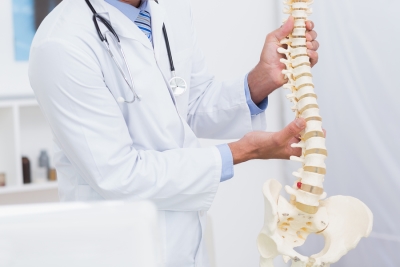You might think of your spine as being a solid structure, but actually, there are open passageways through which the spinal cord and spinal nerves extend. At the rear of each of your vertebrae, there is a large opening. This is known as the spinal canal. Sometimes, one or more of these spinal openings can become narrower than usual, which means the spinal nerves no longer have enough space. The nerves can become compressed or pressured, which interferes with their function and may cause painful symptoms. This condition is known as spinal stenosis and it’s one of the conditions that spine specialists near Miami may diagnose in patients with back pain. If you’ve been experiencing back pain, you can consult an orthopedic surgeon to determine if it could be spinal stenosis.
Symptoms
Spinal stenosis symptoms may become progressively worse over time. If you have spinal stenosis of the lumbar  vertebrae, you might experience lower back pain and pain that extends to the legs, along with numbness and tingling in the legs. Some patients may have difficulty walking. If you have cervical spinal stenosis, the pain, numbness, and tingling may extend down the arm and hand. Additionally, some patients with spinal stenosis have bladder or bowel incontinence.
vertebrae, you might experience lower back pain and pain that extends to the legs, along with numbness and tingling in the legs. Some patients may have difficulty walking. If you have cervical spinal stenosis, the pain, numbness, and tingling may extend down the arm and hand. Additionally, some patients with spinal stenosis have bladder or bowel incontinence.
Non-Surgical Treatments
An orthopedic surgeon may recommend that you try non-surgical treatment options first, such as nonsteroidal anti-inflammatory drugs (NSAIDs), muscle relaxants, antidepressants, or anti-seizure drugs. Physical therapy can help you improve your balance, flexibility, strength, and endurance, in addition to the stability of the spine. Steroid injections may be helpful for reducing inflammation in the back.
Surgical Treatments
If non-surgical treatments are insufficient to relieve your symptoms, your orthopedic surgeon may recommend that you consider a surgical approach. Spine surgery for spinal stenosis patients involves creating more space within the spinal canal. For example, you might have a laminectomy, which is the removal of the lamina on the back of the vertebra. Or, you might have a laminotomy, which is the removal of part of the lamina. A laminoplasty may be appropriate for those with cervical spinal stenosis. It involves making a hinge on the lamina.




















